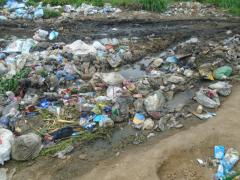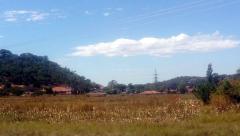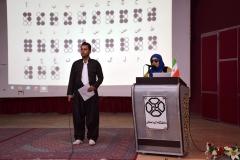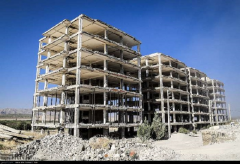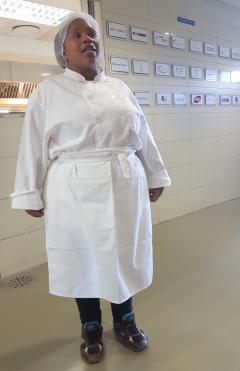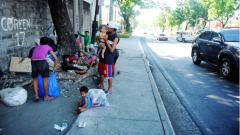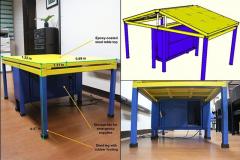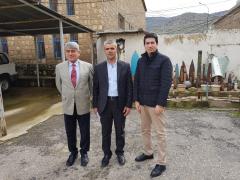In 2016, this researcher was approached by administration, at a time when the University of Zimbabwe was grappling with numerous problems in the area of Waste Management. Garbage tips had become a common feature in various places. Bins were not protected against scavengers (dogs, cats and birds). The task was then to design a mechanism that would help to contain the situation.
Observations showed all sorts of materials (glass, plastic, metal, paper, fabrics and wood) dumped in one place. Apart from protecting the bins against scavengers, it was therefore also necessary to sort all waste into various categories, thereby facilitating systematic collection. This would in turn help to recycle most of these materials into useful products. Having observed similar problems around various suburbs in Harare, regarding waste management, it is some of the ideas generated at the University of Zimbabwe that could profitably be shared with the City of Harare.
Urban agriculture in Zimbabwe has become more than just about personal hobbies and households’ desire to access freshly grown food products. Socio-economic trends in urban areas have made it increasingly important for many urban households to use their backyard and other spaces to produce crops and animals to significantly meet their food requirements as well as sell for incomes. These ‘farmers’ are unique in their resourcefulness in terms of accessing farming inputs, information and markets.
The sector is also prime ground for fashionable food trends and changing wellness demands by urban societies. Farming extension services are usually not as traditionally structured as for rural communities but are influenced by input suppliers, peer knowledge systems and access to information technologies. In this paper we present the role and scope of universities in engaging these unique food producers as well as related stakeholders in urban food production systems.
This is the 16th case study from SUEUAA (Strengthening Urban Engagement in Universities in Asia and Africa), written by Nematollah Azizi of the University of Kurdistan and concerns the contribution of his university to the inclusion of blind people in the university. People with disabilities represent a significant percentage of the community. Disabilities are diverse and can range from obvious impairments to invisible conditions. This includes people with sensory impairments /loss, including those with a vision impairment or who are blind.
This is the 15th case study from SUEUAA (Strengthening Urban Engagement in Universities in Asia and Africa), written by Dr Mpoki Mwaikokesya of the University of Dar-es-Salaam and concerns the contribution of the university to combatting pollution by plastics in his city. Globally there has been a long-term concern over plastic environmental pollution. Even though there has been a general trend where many countries have been adopting some kind of legislation to regulate the manufacturing and use plastics, there are many others which have not yet taken any measure.
One of the explanations why the issue of plastic bags pollution becomes a major concern is because most of the plastic bags produced are designed to be used just once and then discarded, resulting in mass amounts of chemically-laden debris landing into oceans and littering landscapes (UN Environmental Programme).
This is the 14th case study from SUEUAA (Strengthening Urban Engagement in Universities in Asia and Africa), written by Nematollah Azizi of the University of Kurdistan and concerns the contribution of his university to relief and assistance provided to communities following a recent major earthquake. Iran is one of the most seismically active countries in the world, being crossed by several major faults that cover at least 90% of the country. The Iranian Plateau is subject to most types of tectonic activity, including active folding, faulting, and volcanic eruptions.
It is well known for its long history of disastrous earthquake activity. Not only have these earthquakes killed thousands, but they have also led to the waste of valuable natural resources. Since 1900, at least 126,000 fatalities have resulted from earthquakes in Iran.
This is the 13th case study from SUEUAA (Strengthening Urban Engagement in Universities in Asia and Africa), written by Elana Swanepoel of the University of Johannesburg. This case study revolves around the personal story of Ntutuko Tshabalala who eventually trained as a chef and started the company Nubian Uju Food and Hospitality Solutions, all with the help of two University of Johannesburg urban engagement projects.
I met her at the Saturday morning Soweto Farmers Lab arranged by Dr Naude Malan of izindaba Zokudla and requested that she writes her story.
The narrative in the attached is her own, passionately written and providing context of her upbringing, her inner growth and the opportunities which enabled her development. It is so openly and honestly written, and I have have done only minor editing not to lose the passion. When we are involved in urban engagement, we need to acknowledge the person that is benefiting from the engagement. That is very evident from this story. She is not just a number who benefited, but a person who has been transformed and this transformation will circle out to all those with whom she comes into contact.
This is the 12th case study from SUEUAA (Strengthening Urban Engagement in Universities in Asia and Africa), written by Mpoki Mwaikokesya, School of Education, University of Dar-es-Salaam. SUEUAA is interested in how Universities in the Global South can contribute to solving geographical, economic, and social issues in their cities.
Since 2015, the university of Dar-es-Salam had been running the annual campus-wide research exhibitions events to the public as one of the ways of improving awareness of its research activities and research outputs and address societal challenges, and some of that work is described in this case.
This is the 11th case study from SUEUAA (Strengthening Urban Engagement in Universities in Asia and Africa), written by Rebecca Marquez of St Scholastica's College, Manila, Philippines. SUEUAA is interested in how Universities in the Global South can contribute to solving geographical, economic, and social issues in their cities.
Manila, the capital of the Philippines, is also a home to street dwellers. More than 190,000 are street dwellers living in pushcarts and makeshift homes, scavenging through garbage for their daily subsistence. They are informal settlers living in the streets with no regular income and no permanent residence. The children play in streets, scavenge through the trash, denied formal education.
This is the tenth case study from SUEUAA (Strengthening Urban Engagement in Universities in Asia and Africa), written by Zeny Reyes from Philippines Normal University. SUEUAA is interested in how Universities in the Global South can contribute to solving geographical, economic, and social issues in their cities.
The threat of the “BIG ONE” (a cataclysmic event that may reach up to magnitude 8.5) prompted a Philippine Normal University (PNU) research team to forge collaboration with Technological University of the Philippines and De La Salle University engineers to develop a product to ensure the safety of the most vulnerable in schools—the Kindergarten pupils.
In our fifth case study, we highlighted the development of work taking place at the University of Duhok with regards to building collaborations with organisations to develop a regional mine action strategy for areas affected by cluster strike and other battle areas. Last year, Professor Mosleh Duhoky stated:

